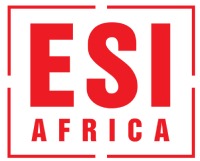Windaba: South African wind energy growth needs grid stability
At present, wind energy accounts for 8% of the current generation capacity in South Africa and is set to be significantly increased
Energy is an apex priority for South Africa which will catalyse the country’s economic growth but will require addressing issues of access “now that loadshedding is behind us.“
The Minister of Electricity and Energy, Dr Kgosientsho Ramokgopa, in opening the 14th edition of the Windaba conference in Cape Town on Wednesday (22 October), re-emphasised the five key areas the department is tackling: universal access, energy security, industrialisation, transforming energy demographics and energy leadership.
The conference is the flagship event of the South African Wind Energy Association (SAWEA).
Recently, Ramokgopa, in announcing the soon-to-be gazetted Integrated Resource Plan – IRP2025, said that while South Africa wouldn’t be getting rid of its coal power generation capacity very quickly, it is an inevitability that green resources will overtake brownfields.
Speaking at a press conference on Sunday, 19 October, he specifically named hydro, nuclear, wind and solar to surpass coal as the primary sources of electricity in the country.
At present, wind accounts for 8% of the current generation capacity and according to the Minister, the plan up to 2030 is to build 7,340MW on the wind side – which is about 15% of today’s installed Eskom capacity.
Ramokgopa pointed out that the updated IRP plans for wind power to become the second most significant energy source for the country’s electricity grid at 24% of the energy mix by 2039, behind coal, which is envisaged to decline to 27%.
Still, Ramokgopa highlighted the need to address bottlenecks in the clean energy sector and the value of alignment between sector stakeholders.
Energy and the economy
The Minister focused his address to delegates on the correlation between energy poverty and its negative impact on the country’s GDP.
He said that energy security challenges over the past 15 years have curbed South Africa’s economic growth – its impact felt from the pupil who cannot study in the dark to industries unable to drive job creation.
“You cannot be economy rich and energy poor.”
Call for expediting grid infrastructure at Windaba
In referencing the conference’s Break the Gridlock, Wire for Growth theme, SAWEA CEO Niveshen Govender said the 2025 edition of the conference will highlight the very real constraints that are physical and regulatory.
“To break the gridlock is to free ourselves… from market inertia… to build the foundation for a future-ready economy. That is why we are here at Windaba 2025.”
Govender lauded Ramokgopa for his “transformational” impact in driving the renewable energy sector forward.
He said IRP2025 sets out the ambition of South Africa’s energy future with wind allocated the second highest output capacity.
But the CEO cautioned that for the plan to be realised, the country’s grid infrastructure shortcomings need to be addressed. He was optimistic that this could be accomplished through NECOM.
Govender also announced the launch of a market intelligence report, a gender diversity baseline study and a project development guideline publication over the next two days.
Wind curtailment and expanding grid access
Speaking at a plenary entitled Wire for Growth, National Transmission Company of South Africa (NTCSA) CEO Monde Bala said the NTCSA is in the process of establishing its own Grid Access Unit centred on transmission grid access. The interim rules have been widely publicised and are now sitting with the regulator.
“We need to get to a point where this is codified so it becomes a licence condition,” said Bala.
He pointed out that a practice note has also been issued around the soon-to-be-established curtailment framework, with a workshop around this framework planned for the beginning of November.
Rivoningo Mnisi, Eskom’s Head of Renewables, garnered a smattering of applause mid-plenary session when he said the utility was in the unenviable position of trying act as both referee for the sector as the system operator, but also a player in energy development. He pointed out that unbundling was meant to create efficiencies but Eskom as transmission operator would have a natural monopoly.
On the renewable generation side, Eskom would have to play by the rules around constructing new generation sources, especially considering that utility-scale projects are created in partnership with Independent Power Producers. “So that forces us to be subject to the rules.”
Cover photo: Minister of Electricity and Energy Dr Kgosientsho Ramokgopa, opened the 14th edition of the Windaba conference in Cape Town on Wednesday. Source: ESI Africa


